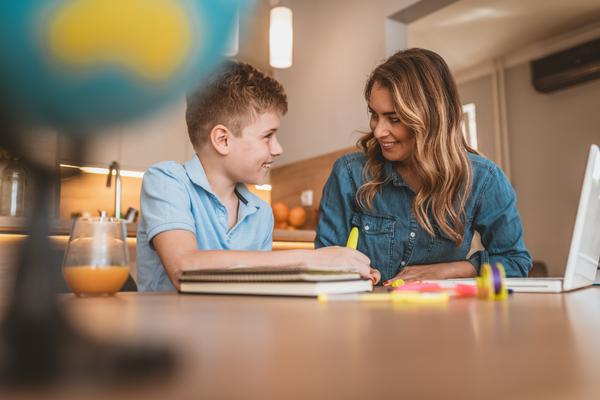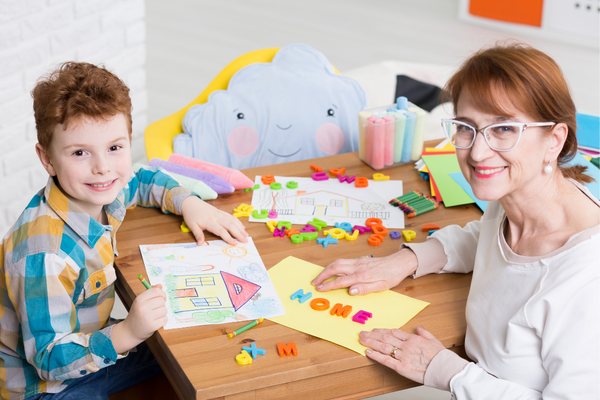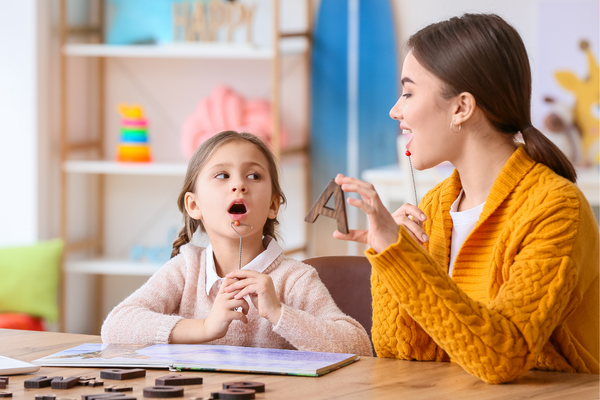Forbrain was used by these families in a variety of ways but the most common use was for speech issues, reading, language, memory, and focus. Here are five cases drawn from the sample that will give you an idea of how Forbrain was used and to what effect.
1. Traumatic Brain Injury in a 15-year-old boy
Angie was anxious to use Forbrain with her 15-year-old son who had suffered a traumatic brain injury that left his attention, memory, and reading impaired. He could read but rarely remember or comprehend what he was reading. Then he tried Forbrain.
"The FIRST day my son used Forbrain his comprehension doubled. By the THIRD DAY that he used it his poetry memorization became effortless!" says Angie.
Her son enjoyed the headset so much that he wore it whenever he was reading. The clarity of his voice gave him a focus that had been missing.

"He said that when he has the headset on, he can hear the story that he is reading, and he likes the way he reads and he gets interested in what he is saying, so he pays attention to himself," says Angie.
Previously he was distracted.
"He said that the main thing he liked about it was listening to the story. He explained that many times, especially for school reading, he’d just start the reading, and then look outside, see a bird, think about the bugs it was eating, wonder if there were worms under the deck, and try to remember to look, and then all of a sudden he was in his canoe fishing . . . and then he’d reach the end of the reading assignment. I’d ask him questions about what he just read, and he’d say he didn’t remember."
His mom saw his attention, speech, and memory improve. The clarity of bone conduction was key.
"As he read out loud – he realized he was mispronouncing words. He’d say a word and realize he didn’t know the word he just said, then go back and figure out the phonics until he recognized the word. I think this was one step of his reading comprehension problems, making up words as he read, and not knowing them. He immediately had an increased understanding of the vocabulary /words that he was reading."
Angie was ecstatic.
"My hope was fulfilled. There is NOTHING more delightful than watching your child enjoy reading. At 3, 5, 10, or 15. Especially – having it restored at 15."
2. Autism in a 9-year-old boy
For the first 7 years of Garrett's life, he was completely nonverbal and it has only been through homeschooling and repetition that he's finally able to hold a conversation. At 9 years old his verbal skills are on par with a 3-year-old.

His mom, Brenda, says:
"In those 7 years, we did early intervention speech therapy five days a week, we bought all the "speak and say" style toys we could find, and exposed him to videos and TV shows designed to teach language arts. We were told to put his sippy cups of milk up on top of our entertainment center and not give them to him until he said "milk." It didn't work. Instead, I had an extremely frustrated little man who couldn't communicate to say he wanted milk and would instead throw himself against the floor in explosive fits of rage and who was locked in his own silent world."
With the introduction of Forbrain, Brenda changed the way she approached her son's reading difficulties. As Garrett started to pronounce words incorrectly (for example - pronouncing "the" as "duh"), she would gently correct him and have him repeat the word properly and have him listen to himself as he did so.
"The biggest difference I noticed is how he enunciates his words while using the Forbrain unit. Words are becoming understandable and do not all run together to make one large word," says Brenda.
She also used Forbrain to help with Garret's memorization.
"I noticed that by wearing Forbrain while he recited his poetry, it made him slow down and actually think about the way he was saying things."
However, one of the biggest improvements has been in his reading.
"As mentioned, Garrett is behind in his reading skills compared to other second graders: it's kind of hard to read aloud when you don't speak. Much of the last two years have been playing "catch up" with other children his own age," says his mother.
Brenda has noticed how targeting autism and reading by having her son read aloud with Forbrain has helped Garrett make a connection between how words flow and how various letters sound when placed together.
"The confidence with his reading that he has achieved in the past 6 weeks is amazing and he's like a completely new kid!" says Brenda.
3. Attention Deficit in an 11-year-old girl
Tasha says that when her daughter Edyn was about 11 years old she was diagnosed with Attention Deficit Disorder.
"Edyn's ADD has had an impact on her learning throughout her school years and affects things like her memory and retention of what she's learned," says her mom.
Tasha decided to use Forbrain when Edyn was reading and to help with her poetry memorization. After reading the very first day, her daughter's words were, "Mom, I LOVE THIS THING!!"
With renewed interest in her reading, Edyn's focus seemed to rapidly improve. Normally while reading she gives up because she has to reread things that she's already read, and just doesn't want to keep having to fight it.
Her mom says, "She wasn't distracted one bit while she was reading. This is huge for her! She couldn't hear any outside distractions and was able to completely focus on what she was reading. She wanted to keep reading. That is the testimony to it working."
4. Reading comprehension issues in a 14-year-old
Barbette admitted that her youngest daughter had struggled with reading comprehension issues. So she used Forbrain while her daughter was reading.
Comprehension increased and frustration decreased as her daughter enjoyed using the headset. In fact, when asked her daughter said, "I felt like I was really able to focus on my story without getting distracted."

"For us, that is HUGE!" says Barbette.
"I love the fact that my daughter was able to comprehend what she read so much easier and without frustration. She noticed that she wasn't distracted while reading, and I noticed that she seemed to have an easier time reading, and didn't get so aggravated while doing it."
Not surprisingly Barbette was very enthusiastic about Forbrain.
"My bottom line on this product is that it is a pretty amazing piece of technology."
5. Speech production in an 8-year-old girl
Erika has a daughter who has speech production issues and is highly sensitive when her mom, or anyone else, tries to correct her.
Erika says, "Her only speech issue now is pronouncing the /r/ sound. And as much as we try and as many of the "tricks" I've used, we can't seem to overcome it. She is 8 years old now, so I don't expect her to outgrow it at this point. Also, because she's older, she's more aware of it. She gets extremely embarrassed and sometimes angry when someone (usually a family member) cannot understand what she's saying."

After using Forbrain for just a few weeks her mom could already see a big improvement. Much of that comes from her daughter's enthusiasm for Forbrain.
"It's cool. It sounds like an echo when I talk," she says.
This means that she is now much more willing to work on her pronunciation.
"For a while, every time I tried to help her, she would get upset and become silent. Now, her attitude has improved and she's willing to try. She gets the device out of its case and puts it on to read by herself most days without being reminded to," says Erika.
Erika is thrilled with her daughter's progress.
"Though she has not mastered that tricky /r/ sound just yet, I have definitely seen an improvement. I really wish I had recorded her reading at the beginning and then recorded her reading now so she herself could hear the difference."
These cases are fairly typical of the experience reported by homeschooling parents who were generally very enthusiastic about Forbrain's technology and ease of use.

.png?width=1900&name=blog_banner%20(1).png)

